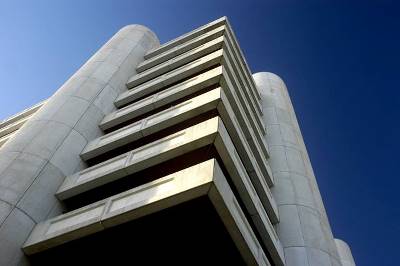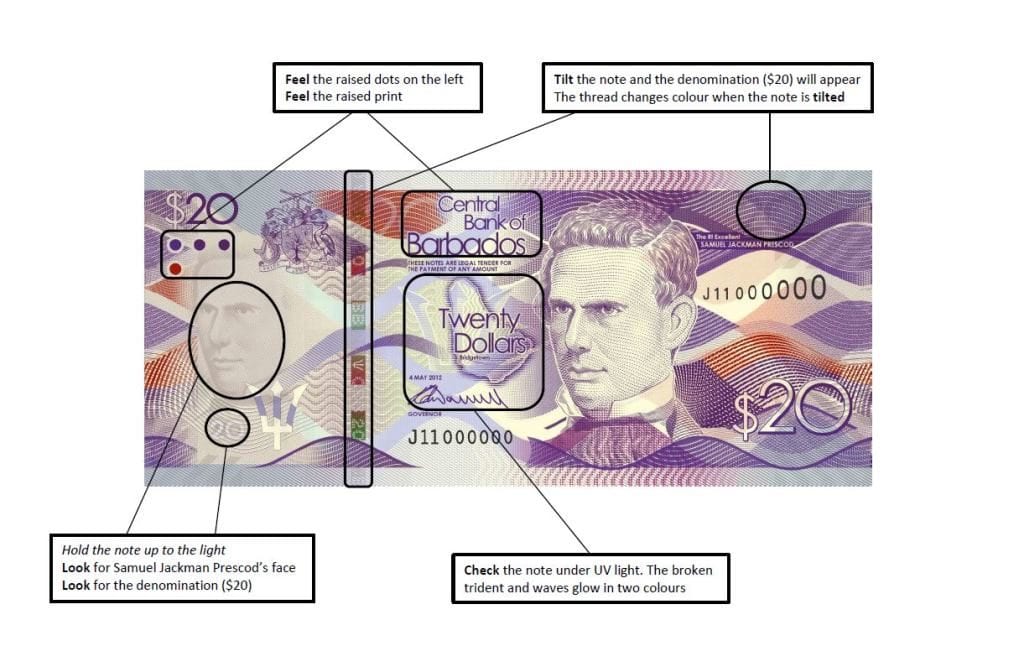 As the Crop Over season approaches, the Central Bank is encouraging the public to be vigilant when completing cash transactions so as to avoid falling victims to counterfeiters.
As the Crop Over season approaches, the Central Bank is encouraging the public to be vigilant when completing cash transactions so as to avoid falling victims to counterfeiters.
“All Barbadian banknotes, and especially the new series, contain security features that are hard to duplicate and at the same time easy to identify,” explained Octavia Gibson, Deputy Director, Currency.
“Counterfeiters are not targeting the security features but are simply photocopying notes. The public needs to distinguish paper copies from the real cotton banknotes.”
The Bank disclosed that it is often during times of high commercial activity that criminals will attempt to pass fake money. “Counterfeiters are counting on you to be too busy, too distracted to check your money,” Gibson warned.
“Check the back and front of your notes. Learn three or four security features and check for them every time. Learn the feel of paper and the feel of genuine banknotes, know the security threads on each denomination, know the two watermarks on each banknote. Become very familiar with your notes.”

(Central Bank of Barbados)
Security Features of the 2013 Series
• When the notes are held up to the light, the face of the person featured on the note and the denomination of the note, in numbers, appears on the left of the note.
• Near the centre of the note, there are short reflective bars that run from the top to the bottom of the note. On the $2, $5 and $10, these bars are silver and wave-like, while on the $20, $50 and $100, the bars change colour from red to green as the note is moved around. In both instances, the bar becomes a complete line when the note is held up to the light.
• On the right side of the two highest denominations, there is a holographic patch. The dominant image is a pelican ($50) or a dolphin ($100). When the note is tilted, that image, as well as the background images – broken tridents, Pride of Barbados flowers and the note’s denomination – appear and disappear and change colour.
• Under UV light, the waves and broken trident in the centre of the note fluoresce. On the $2, $5, and $10, these glow in a shade of green, while on higher denominations, they glow in two colours: pink and green ($20), green and yellow ($50) and yellow and green ($100). The serial numbers off all denominations also fluoresce.
Security Features of the 2007 Series
• When the notes are held up to the light, the map of Barbados appears on the left of the note. To the right of the map, there is another, smaller image: the broken trident on the $2, $5 and $10; and a Pride of Barbados flower on the $20, $50 and $100.
• Near the centre of the note, there are short reflective bars that run from the top to the bottom of the note. On the $2, $5 and $10, these bars are silver and wave-like, while on the $20, $50 and $100, they are thicker and straight. In both instances, the bar becomes a complete line when the note is held up to the light.
• On the right side of the two highest denominations, there is a highly reflective foil patch. On the $50, it is an aquamarine pelican, while on the $100, it is a gold dolphin. In both instances, the image is overprinted with a Pride of Barbados flower.
Images of the new notes and more information about the security features of this and previous series can be found on the website of the Central Bank of Barbados and the Central Bank also provides free training sessions to companies and other organizations on request.
Central Bank of Barbados
